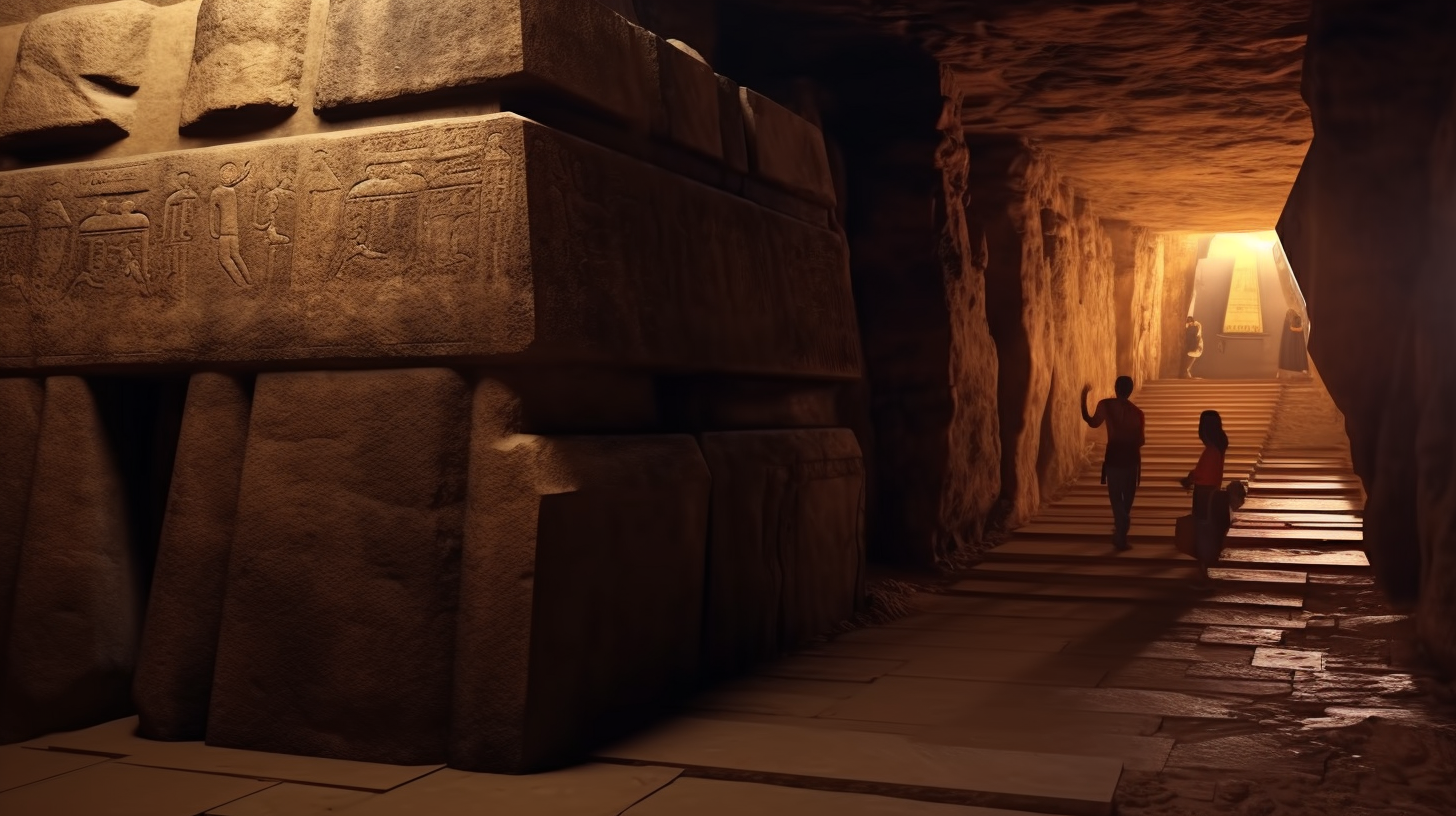A Glimpse from Within
Back in 1850, amidst the vast desert of Sakara, Egypt, an astounding revelation unfolded. Auguste Mariette, a French Egyptologist tasked with retrieving ancient scripts for the esteemed Louvre Museum in Paris, stumbled upon a peculiar sight. Hidden beneath massive rocks, veiled by the desert’s cloak, lay what appeared to be the entrance to a subterranean chamber. Fueled by curiosity, Mariette unearthed the passage that led to a tomb complex known as the Serapium after clearing the sand and utilizing explosives. Fast forward to April 2018, this enigmatic site piqued the interest of ancient astronaut theorist Giorgio Tsoukalos and Egyptian Egyptologist Rami Ramani, sparking their thirst for exploration.
Cracking the Enigmas of the Sakara Serapium
The name “Serapium” or “Serapeum” fuses the bull god Apis with the deity Osiris, shrouded in mystery. Beneath the expansive desert expanse lies a winding corridor spanning 790 feet, adorned with intricately carved niches in the limestone formations. Encased within these niches lie 24 colossal stone sarcophagi, towering over 10 feet tall and measuring around 13 feet in length by 7.5 feet in width. Nonetheless, a conundrum persists among experts and enthusiasts alike – the puzzle of how the ancient Egyptians moved these immense granite boxes to this cryptic underground chamber.

An Unsolved Mystery: Unraveling the Purpose of the Serapium
Despite meticulous examination and exploration, the intention behind these sarcophagi remains shrouded in enigma. Traditional belief among Egyptologists and archaeologists suggests that these imposing structures were meant to house the remains of revered Apis bulls. However, the revelation that only one tomb contained animal remains while the rest stood empty challenges this assumption. Hence, the mystery deepens, prompting contemplation on whether the secrets concealed within the Serapium transcend mere appearances.
The Divine Connection Through the Apis Bull
It is imperative to recognize that the ancient Egyptians did not venerate animals but viewed them as intermediaries of the divine. The Apis bull symbolized Osiris, intertwined with celestial ties. Legend narrates the creation of the first Apis bull when a divine ray of light struck a cow, birthing this sacred entity. This celestial correlation is mirrored in the meticulous craftsmanship of the sarcophagi, expertly hewn from basalt known for its enduring quality. The flawless polishing with impeccable 90-degree angles on their sides and bases heightens the mystique surrounding their genesis.
Inscribed Journeys for an Everlasting Transition
The hieroglyphs etched on the sarcophagi within the Serapium provide vital glimpses into ancient Egyptian beliefs. The “false doors” played a crucial role in guiding the mummy’s spirit and soul into the afterlife. These inscriptions played a pivotal role in ensuring the journey of the Apis bulls towards eternal bliss, where they could reunite with Osiris in the ethereal realm.
An Epoch of Celestial Encounters in Egypt’s Glittering Age
Ancient recorders such as Herodotus, Strabo, and Eusebius allude to a forgotten era in Egypt known as the Golden Age, possibly dating back to 10,500 BC. Some postulate that the mysteries of the Serapium might echo remnants from this enigmatic epoch, a time when humans reportedly cohabited with deities. According to the ancient astronaut theory, these deities were not mere mythical beings but travelers from extraterrestrial realms. Certain interpretations even suggest that the depiction of the Apis bull engraved into a sarcophagus signifies a link to the cosmos rather than just serving as a receptacle for embalmed bulls.
Observation:
Final Musings
The Serapium at Sakara stands as an enigmatic enchanter, captivating scholars and enthusiasts alike. Its monumental stone sarcophagi, intricate craftsmanship, and inscriptions hint at a profound cosmic correlation. While the genuine intent behind these monuments remains elusive, the allure of the Serapium beckons us to delve into Egypt’s ancient enigmas, where the boundaries between myth and reality blur, and the shadow of extraterrestrial influence casts a veil over historical narratives.
